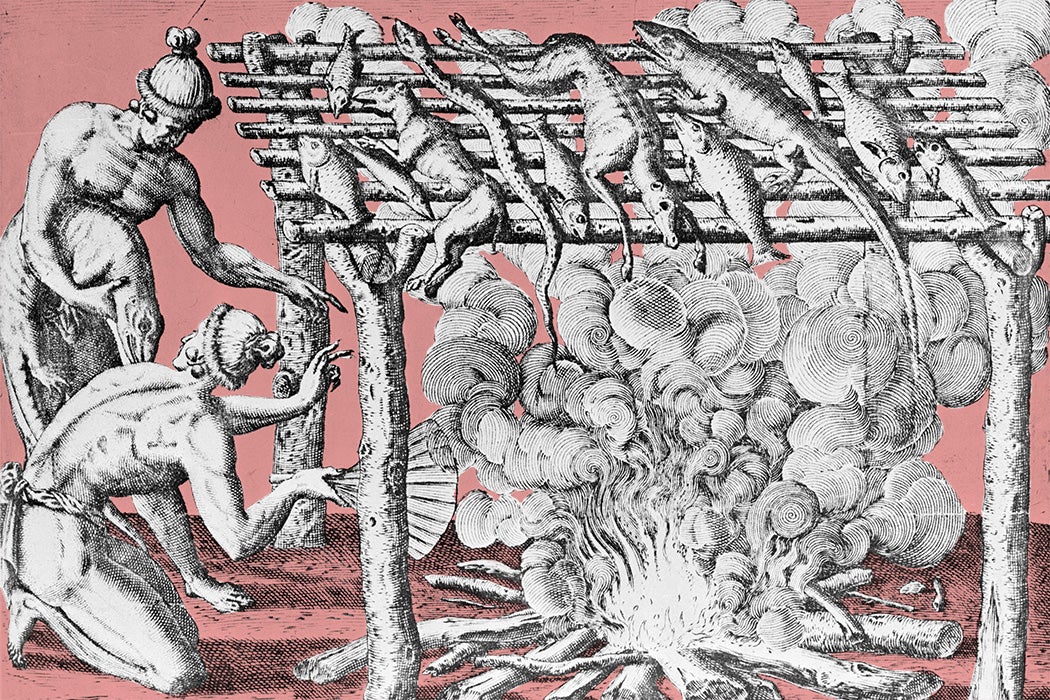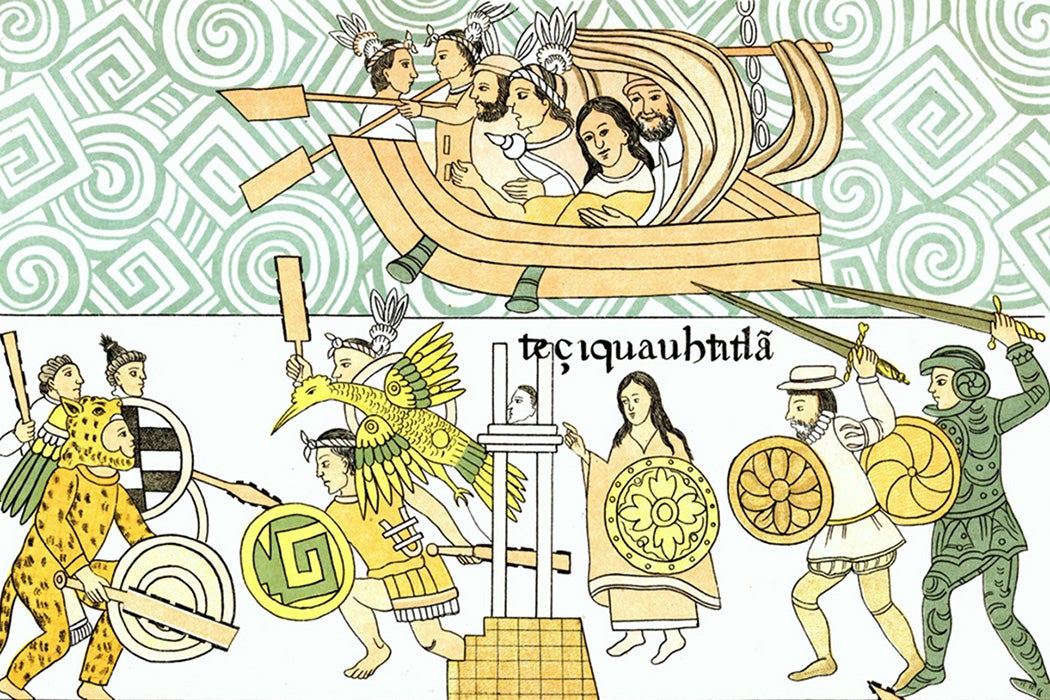For Spaniards who arrived in the Americas during the early decades of colonization, the desire for food from home wasn’t just about nostalgia or comfort. As historian Rebecca Earle writes, in their understanding of human physiology, it was literally a matter of maintaining their identity and even of physical survival.
Earle writes that Spaniards interpreted differences between their bodies and those of Native Americans through the lens of humoral medicine, which maintained that each person was most influenced by one of the four humors: blood, phlegm, black bile, or yellow bile. They generally categorized the Native men, who rarely grew beards or went bald, as phlegmatic, making them similar to women. Spaniards, on the other hand, were choleric—governed by yellow bile, which made them hot-tempered and prone to stomach trouble.
Since many educated Spaniards believed Native Americans were originally from the Old World, they saw these differences as a product of different environments. That meant Europeans were in danger of becoming more like the people already living in the Americans if they breathed the same air and ate the same foods. Legal scholar Diego Andrés Rocha described Europeans “who, on withdrawing into the hills and eating maize and other Indian dainties, return so toasted that they resemble Indians.”
Another concerned Spaniard, Gregorio García, suggested that the heat and moisture of Mesoamerica could stop the growth of his people’s prized facial hair. But he believed this danger could be staved off by consuming “good food and sustenance such as lamb, chicken, turkey, and good beef, bread, and wine” and avoiding food “of very little nourishment,” including cassava and potatoes.
In humoral medicine, changing the balance of a body’s humors could be dangerous. In 1494, Christopher Columbus reported to Spanish monarchs Ferdinand and Isabella on the high mortality rate among Europeans in the New World. He explained that the trouble lay in the “change in water and air,” but that this problem should be solved once Spanish settlements had “the foods we are accustomed to in Spain.”
Weekly Newsletter
In reality, Earle writes, most of the food the Spanish ate was native to the Americas, frequently seized from local people. But when they got sick, they often blamed the illness on the food. And they did go to great lengths to obtain Old World foods—especially the wheat bread and grape wine generally considered necessary for Catholic communion. They often reported in highly exaggerated terms on the incredible growth of European crops in American soil, a narrative that proved the suitability of the New World paradise for European life. Colonial botanist Fernández de Oviedo even suggested that the climate of the Americas was moderating thanks to “being dominated and tamed by Spanish dominion.”
“Far from being an enterprise based on an unquestioning assumption of European superiority, early modern colonialism was an anxious pursuit,” Earle writes. “The anxiety is captured most profoundly in the fear that living in an unfamiliar environment, and among unfamiliar peoples, might alter not only the customs but also the very bodies of settlers.”



![Travels through Virginia. [From Theodor de Bry's 'America', Vol. I, 1590, after a drawing of John White].](https://daily.jstor.org/wp-content/uploads/2019/12/the_construction_of_america_in_the_eyes_of_the_english_1050x700.jpg)






